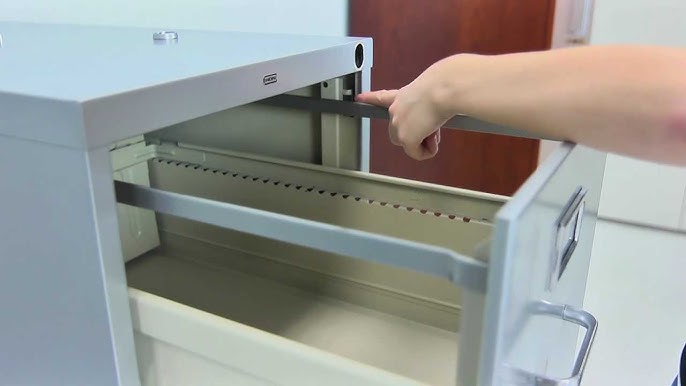Introduction
Embark on a captivating journey into the world of cabinet locks, where the magic of security and precision comes to life. This guide is like a treasure map, revealing the secrets behind how cabinet locks actually work. Picture it as an adventure, where we’ll explore all the cool details and answer the big question: “How does a cabinet lock work?” Brace yourself for a thrilling trip that will offer you valuable professional advice, solutions to the inquiries you’ve always had, and the knowledge you need to keep your possessions safe. The book contains something for everyone, whether you’re a grown-up trying to improve your security skills or someone who’s curious. Join us on this epic quest to uncover the secrets of cabinet locks and level up your understanding of protection and security!

The basics of cabinet lock
A cabinet lock is like a superhero for your cupboards and drawers! It’s a special gadget that keeps your stuff safe by making sure only the right people can open it. Imagine it as a secret code or a tiny key that clicks into place, magically locking up your treasures. There are different kinds of cabinet locks—some need a key, some have secret number combinations, and there are even high-tech ones that work with gadgets! These locks are like guardians, securing your cabinets at home or in the office, ensuring that only you or those with the special key or code can access what’s inside. They’re the unsung heroes of privacy and protection!
How does a cabinet lock work?
Unlocking the secrets of a cabinet lock involves a series of captivating maneuvers. It all starts with the insertion of a unique key into the lock’s keyway, setting the unlocking process into motion. As the key turns, a fascinating interplay unfolds within the lock’s internals, aligning intricate pins or tumblers. This alignment creates a smooth pathway for the lock’s internal cylinder or bolt, leading to the pivotal moment where the bolt gracefully retracts or extends. With this orchestrated movement, the cabinet door or drawer is freed, swinging open to reveal its contents. Whether it’s the classic turn of a key or the modern dance of electronic components, understanding the nuanced workings of a cabinet lock adds a touch of mastery to the art of security.
The Anatomy of a Cabinet Lock
The anatomy of a cabinet lock consists of several key components that work in harmony to secure and control access to cabinets or drawers. Here’s a breakdown of the essential elements:
Keyway: The keyway is the opening or slot where the key is inserted. It provides access for the key to reach the lock’s internal mechanism.
Tumblers or pins: Tumblers or pins are internal components that interact with the key. When the correct key is inserted and turned, these tumblers align to allow the lock to open.
Cylinder: The cylinder is a core component that houses the tumblers or pins. It rotates when the key is turned, initiating the unlocking process.
Bolt: The bolt is the movable part of the lock that extends or retracts to secure or release the cabinet door or drawer. It responds to the alignment of tumblers or pins.
Lever or Latch: In some cabinet locks, a lever or latch is used to secure the bolt in place, ensuring that the cabinet remains locked until the key is used.
Strike Plate: The strike plate is the part attached to the cabinet frame or structure where the bolt engages, providing a secure anchor point when the cabinet is locked.
Key: The key is the external tool that, when inserted and turned in the keyway, engages with the internal components to operate the lock.
Find more unknown facts
There are several ways to find out more about locks, such as going to the local shops near you or visiting the online stores. But in this process, you will face many difficulties. So we found the best solution by visiting the website of Junying Metal Manufacturing. Here is the website of Junying Metal Manufacturing, which gives the exact and ideal facts you are seeking. So don’t worry and visit now.

FAQs
Can cabinet locks be picked?
While no lock is entirely pick-proof, high-quality cabinet locks with complex mechanisms and additional security features significantly deter picking attempts.
What maintenance do cabinet locks require?
Routine lubrication and cleaning of cabinet locks ensure smooth operation. Check for any signs of wear and tear, and promptly replace damaged locks for optimal security.
Are electronic cabinet locks more secure?
Electronic locks offer advanced security features, but their effectiveness depends on proper installation and maintenance. Regularly update access codes or biometric data for enhanced security.
Can I install a cabinet lock myself?
Yes, many cabinet locks are designed for easy DIY installation. However, for optimal security, consulting a professional locksmith is recommended.
How can I enhance cabinet lock security?
Supplement cabinet lock security by installing additional measures such as security cameras, alarm systems, or choosing locks with higher security ratings.
In conclusion
So, here’s the wrap-up: figuring out how cabinet locks work is a bit like going on a treasure hunt, finding a mix of old-school tricks and cool new ideas. Whether you’re into the classic locks with pins or the fancy electronic ones, knowing how they do their thing helps you be the boss of keeping your stuff safe. It’s like having your own special power to choose what works best for you, whether you’re a grown-up guarding important things or a kid with secret treasures. So, whether you like the old-school vibes or the high-tech feels, understanding how these locks work lets you make super-smart choices to protect all your stuff!
